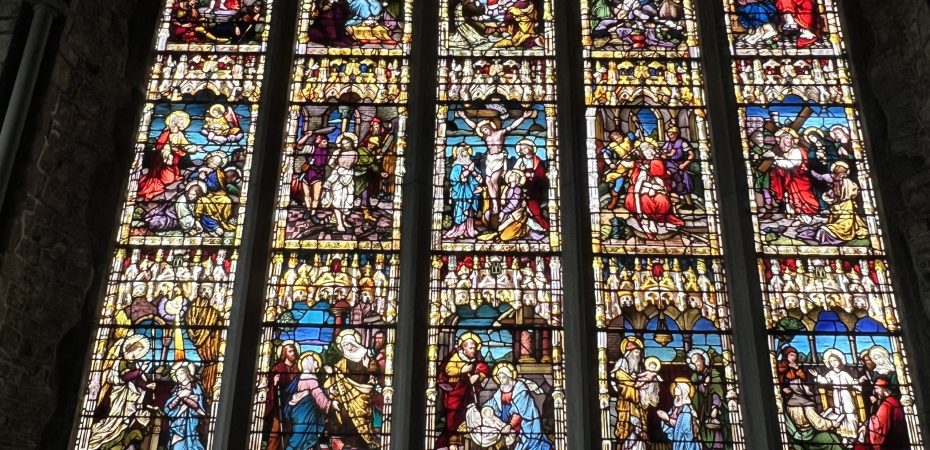Today we left Wicklow and headed south to Kilkenny. The day was overcast and, by the time we reached our destination, the umbrellas came out. We had been quite fortunate with the weather the past 10 days.
I was looking forward to our first event – a sheep dog demonstration at Jerpoint Park. We met Joe McConnell, our affable host and his Border Collie “Cap”. As we pulled up in the bus, Cap was waiting for us, wagging his tail in excitement. He knew it was his time to shine.
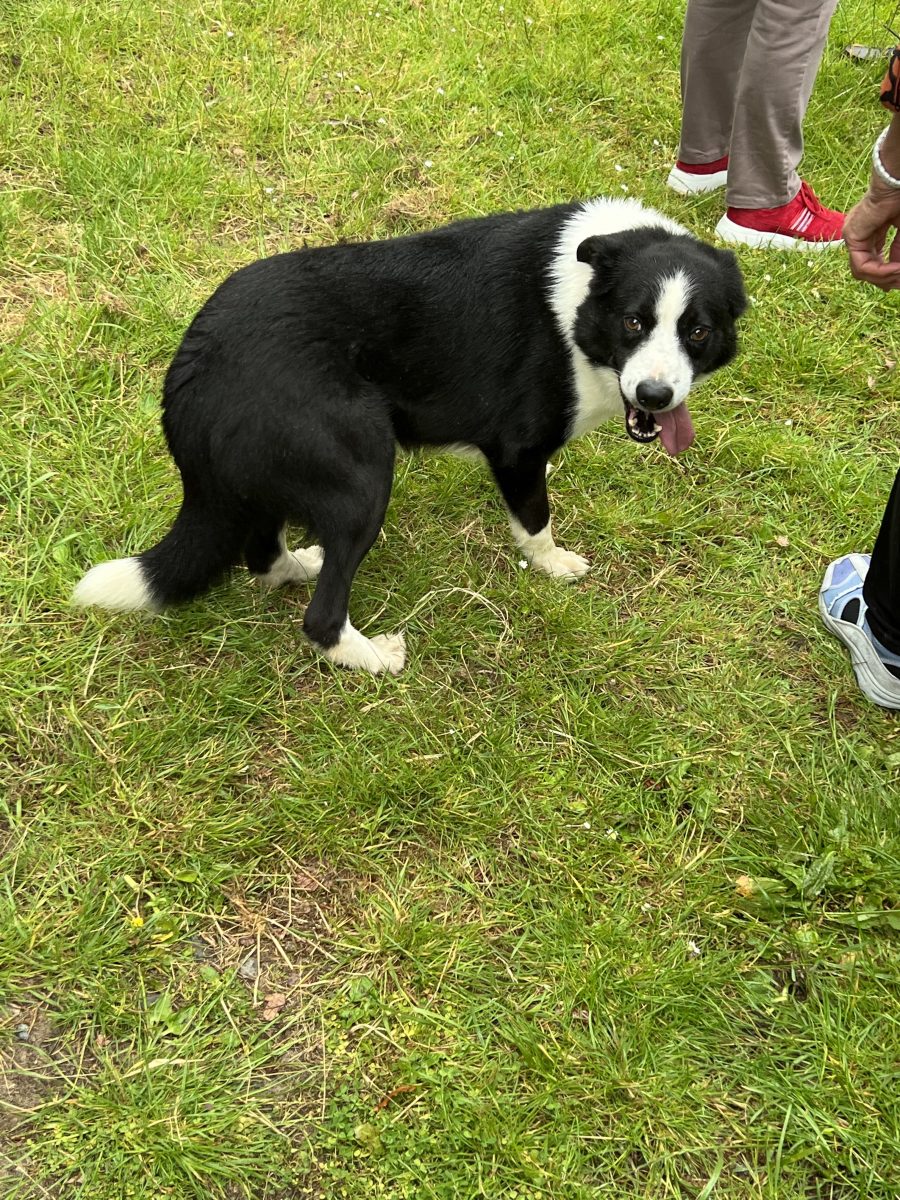
The sheep were huddled in the far corner. Guess they knew what was coming but weren’t that enthusiastic about it.

I tried to get a video but he was too fast, there was our group in the middle of the field, and I was holding an umbrella. However, I’ve borrowed this video from Youtube to give you an idea.
Here is Joe explaining the bond between him and Cap and what would happen if he ever used a hand against Cap.
After the demo I told Cap he was a good boy, what a great job he did and gave him extra neck rubs.
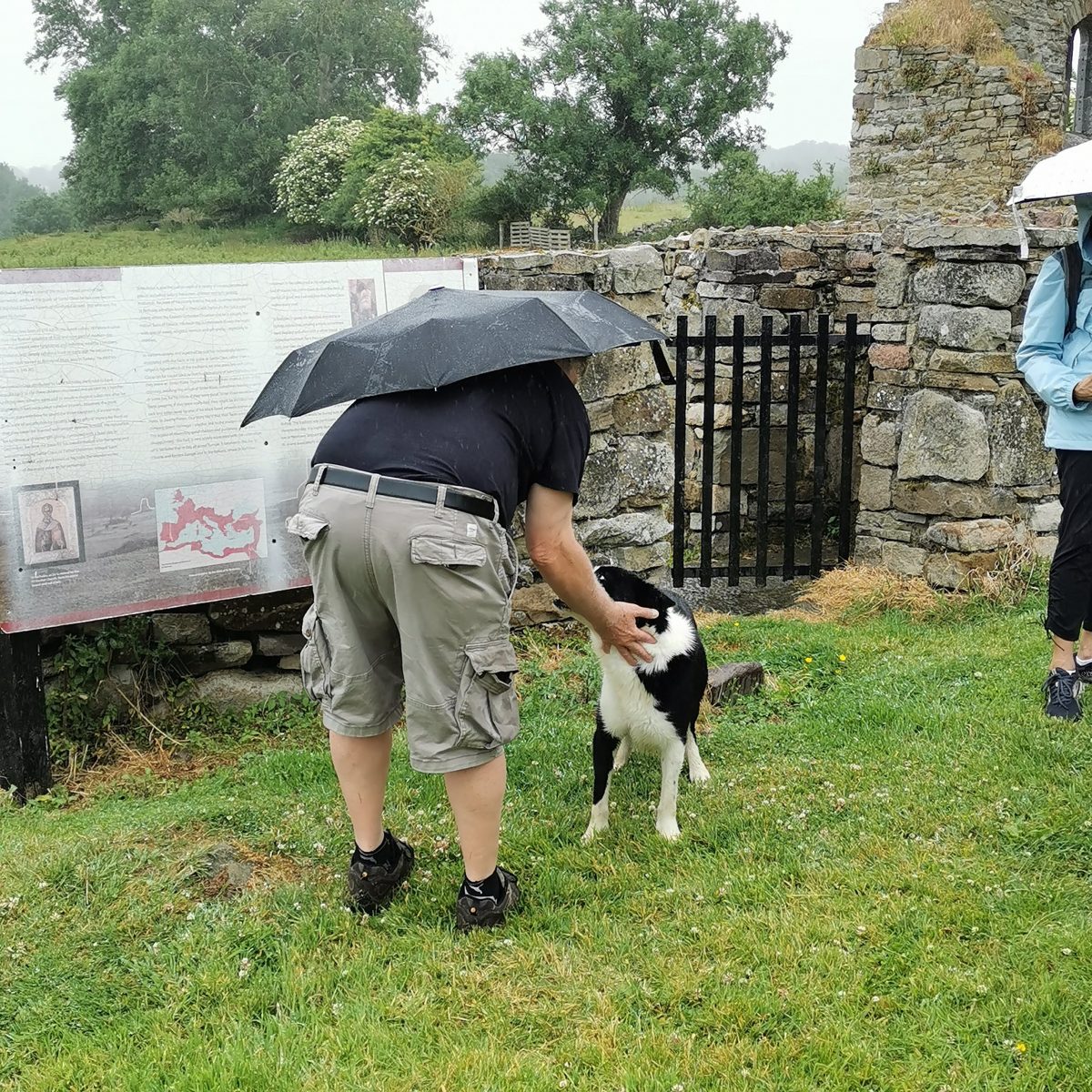
Jerpoint Park is a working farm that is located on a 12th century medieval town. In addition to the demo, Joe took us around the property and told us about the town called Newton Jerpoint. 800 years ago the town was established on this field by the Normans
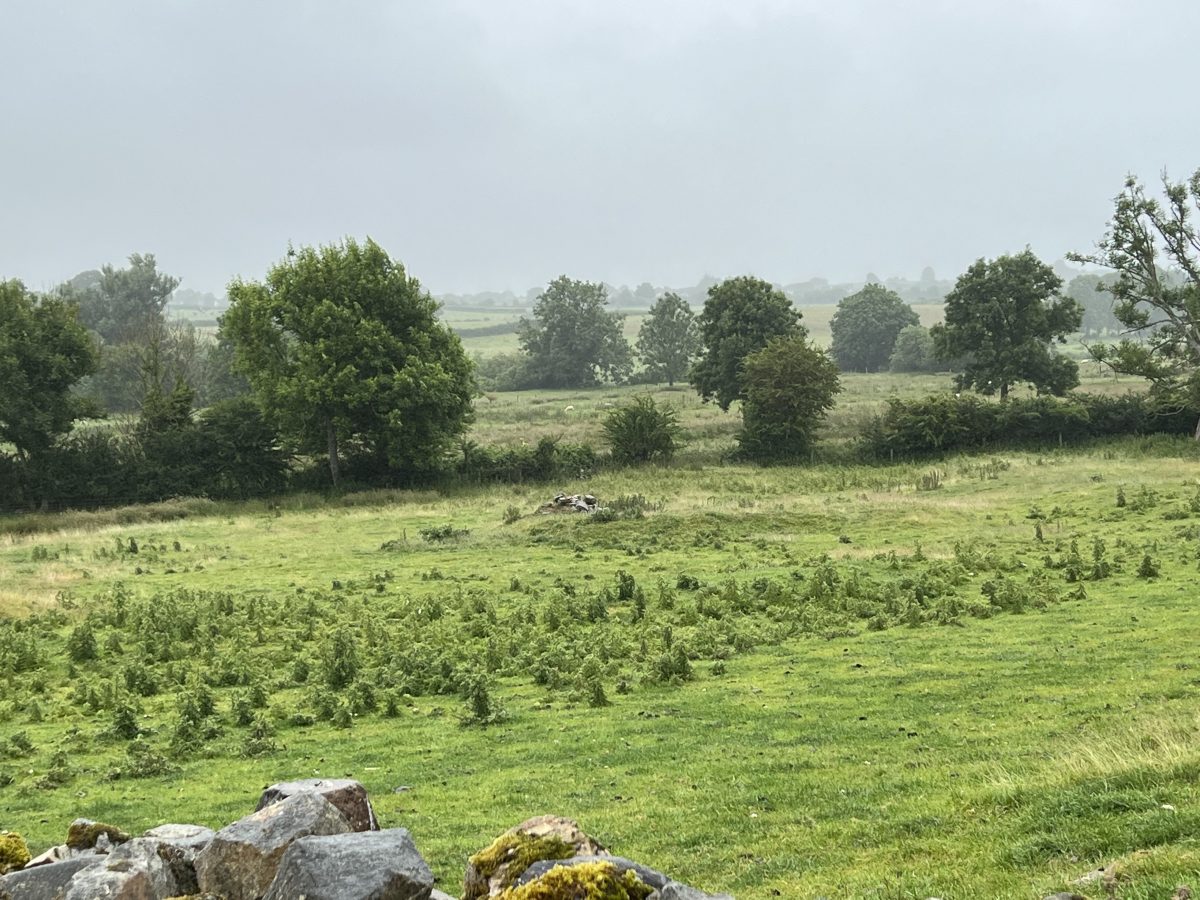
The “Lost City” disappeared about 400 years ago. Stories persisted and archaeologists began to map out the streets using LIDAR laser scanning. In 2007, The Heritage Council published a special report on the area. Joe and his wife Maeve commissioned a painting based on the laser scanning. It gives visitors a real sense of Newton Jerpoint at the height of prosperity- around 1450 AD
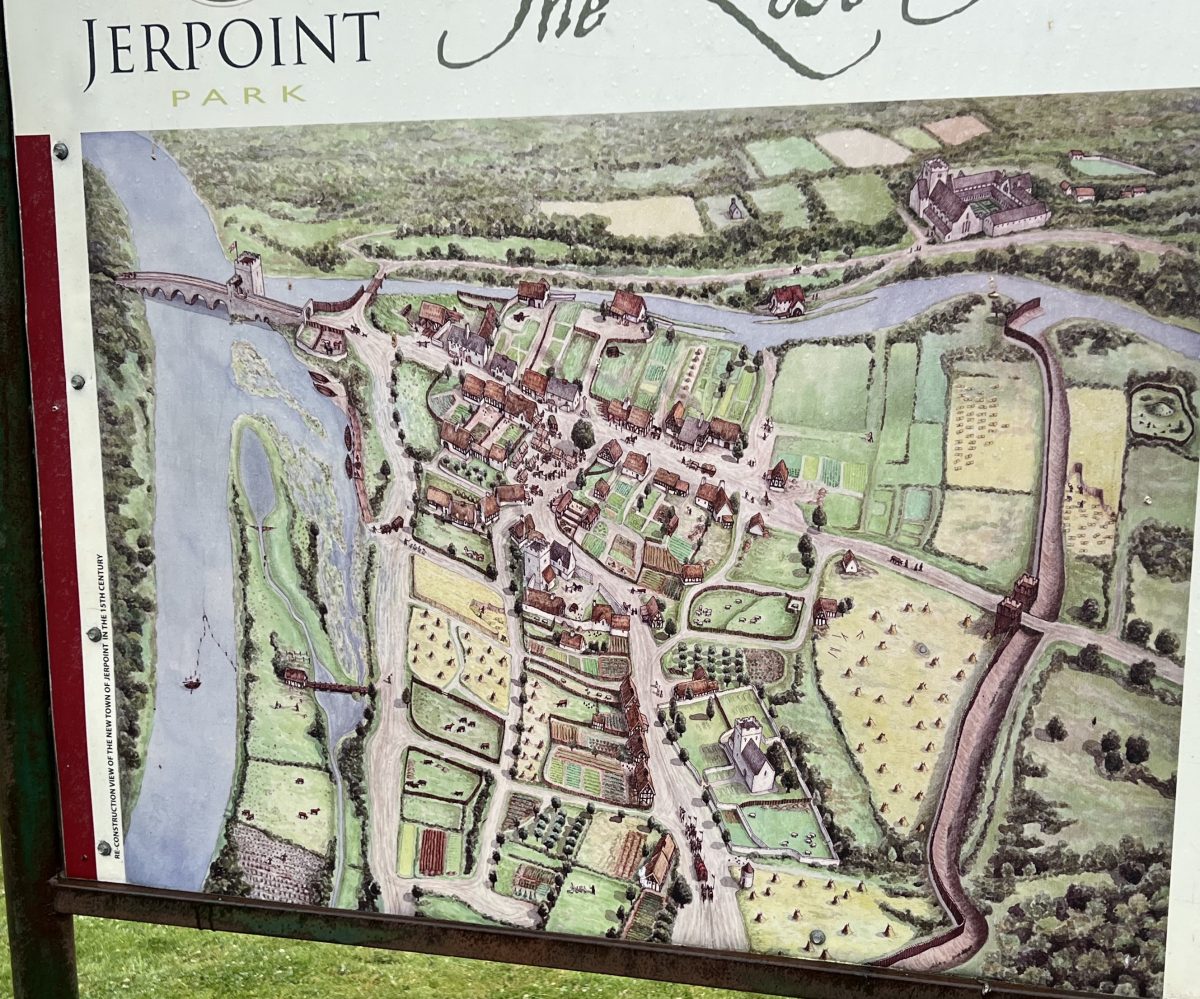
Joe told us how he had retired from farming and was looking for a place to rest. Little did he realize a new calling would enter his life. He purchased the farm in 2005, including the ruins of St. Nicholas’ Church. The church was covered in vegetation. Imagine Joe’s surprise when he uncovered the church. He felt he had been chosen to protect this treasure.
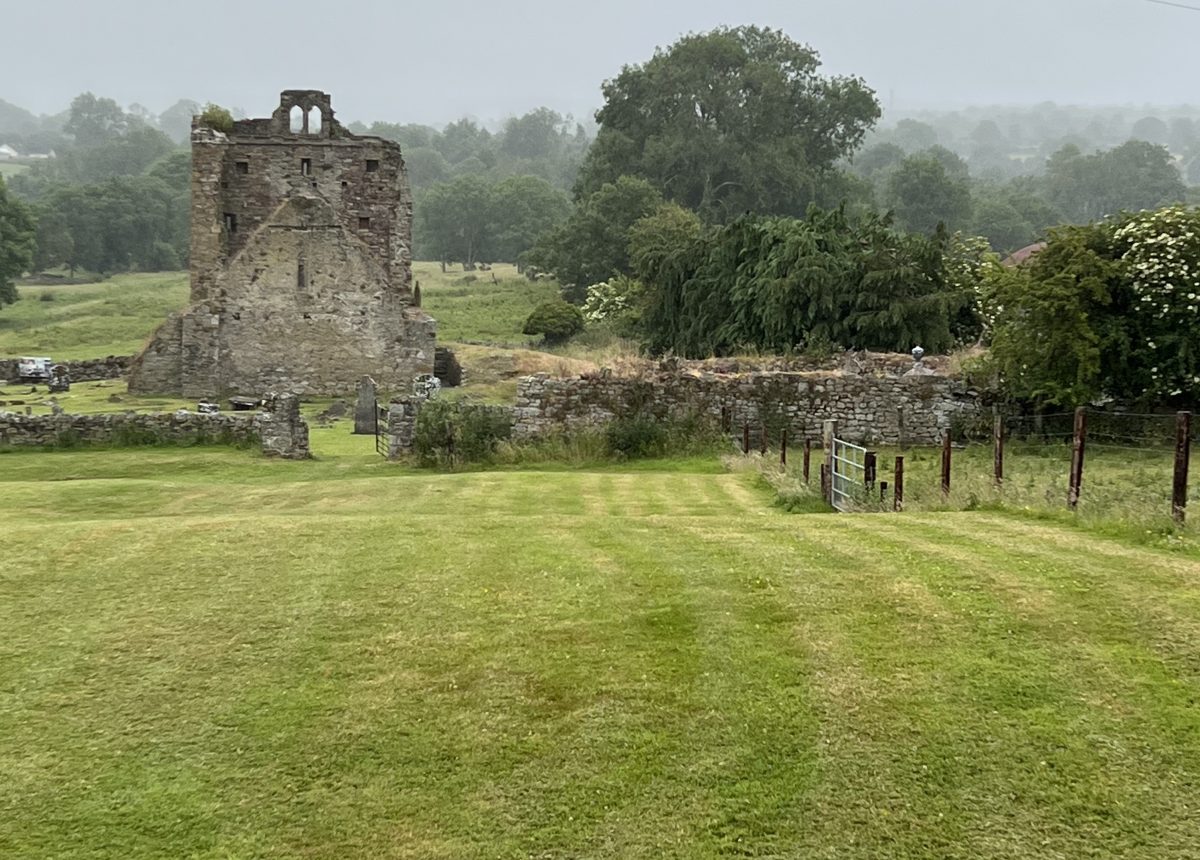
He created an info sign that shows the progress of the church being uncovered
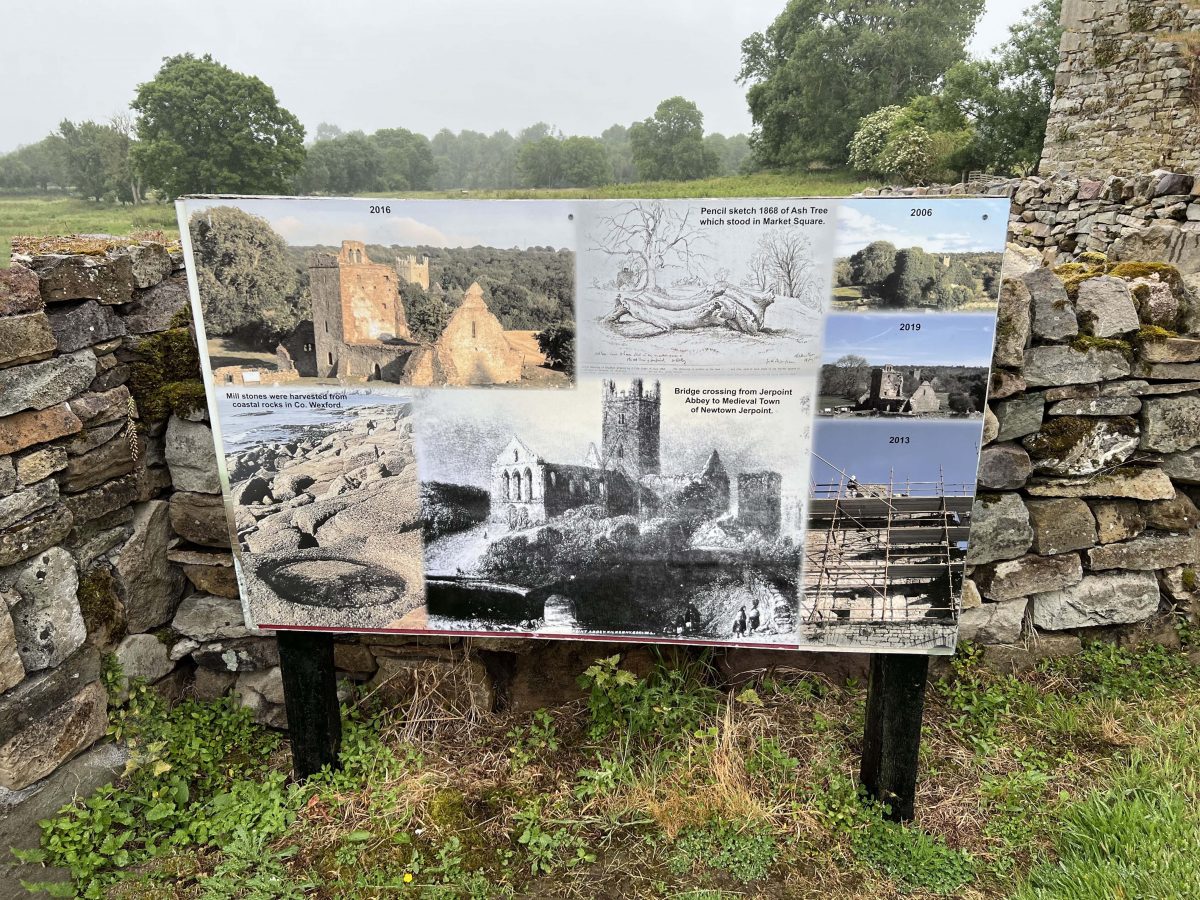
It dates from the foundation of the town. There were 3 phases of construction – the nave and chancel from 1200 AD.
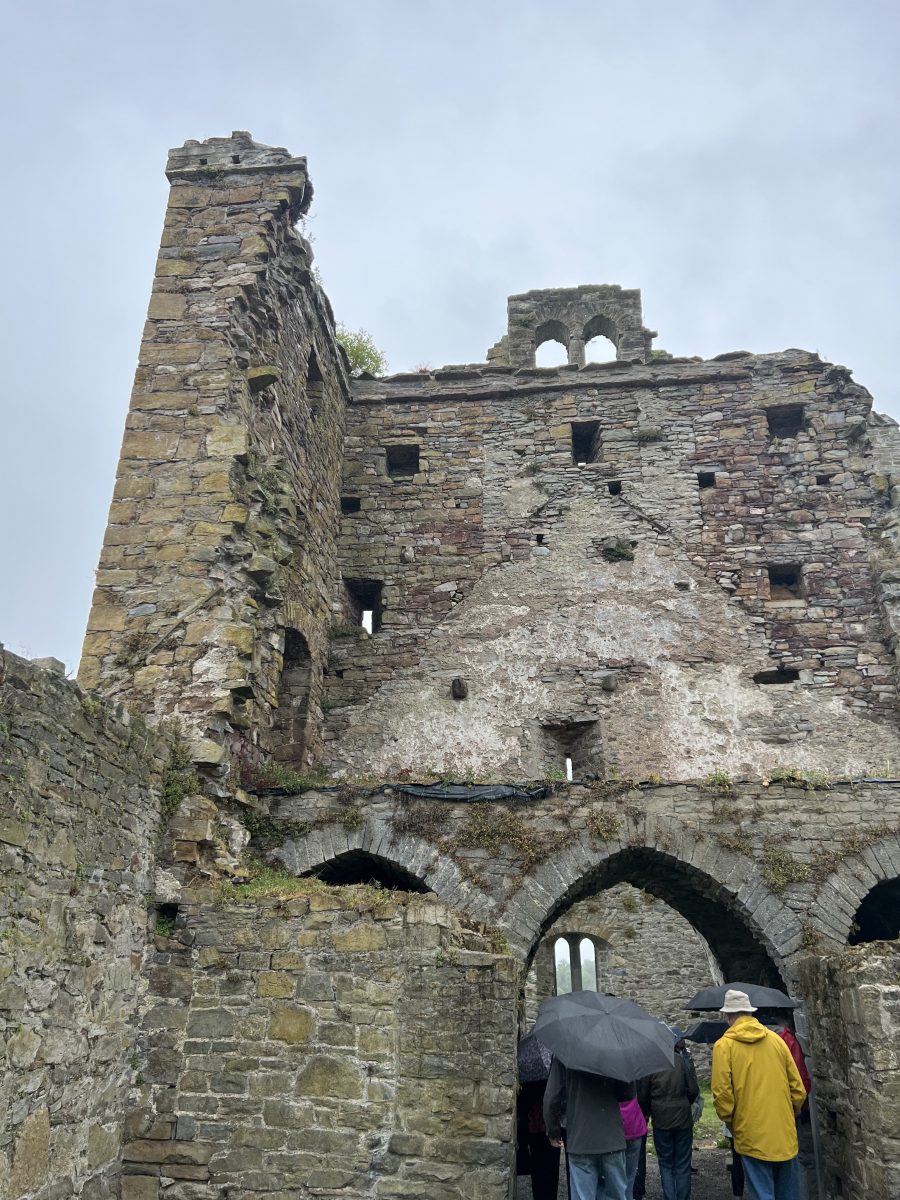
Around 1400, a “rood screen” was added dividing the nave from the chancel. The rood screen contained a large sculpture of the cross or crucifixion. A small set of steps suggest there was a gallery that the priest would use for sermons to a large crowd.
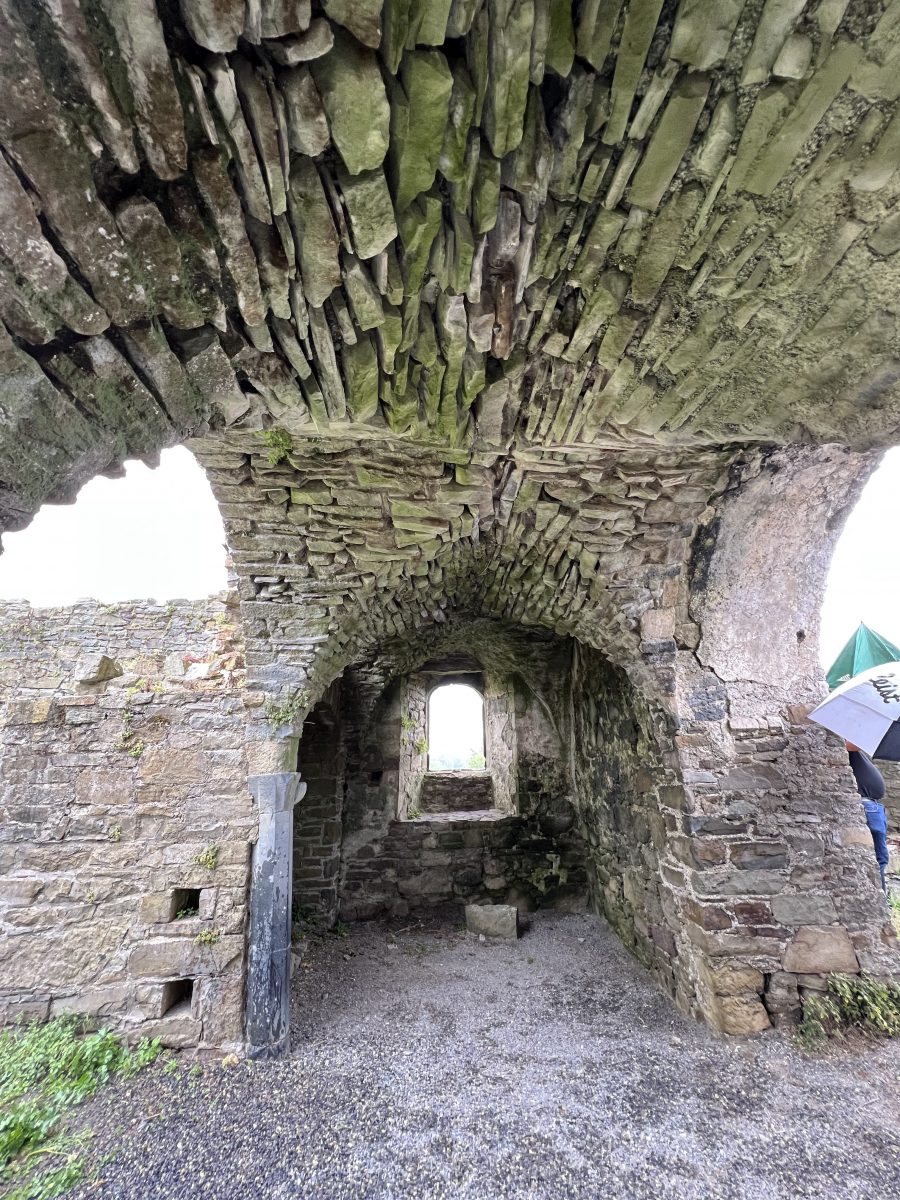
The slabs lying flat suggest they were buried while there was still a roof on the church. People buried outside have upright stones.
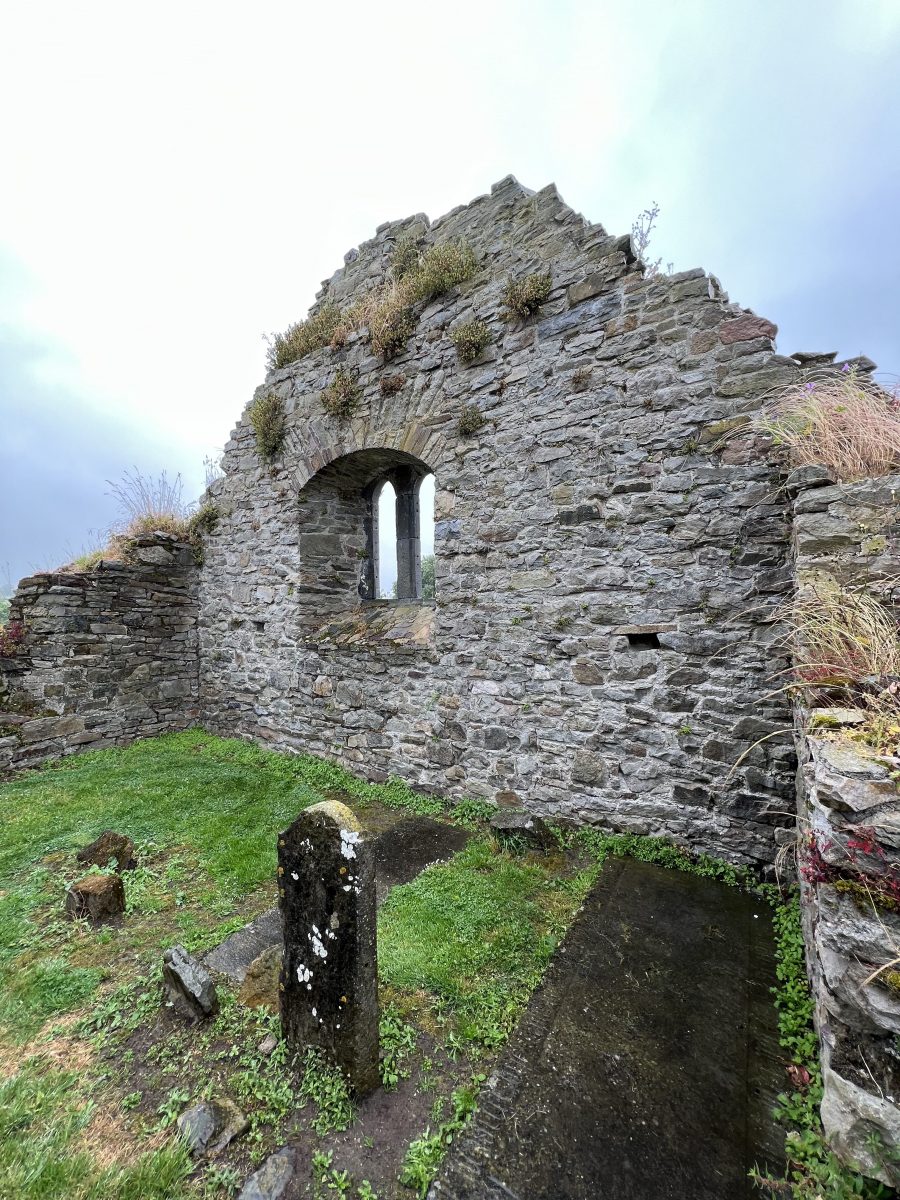
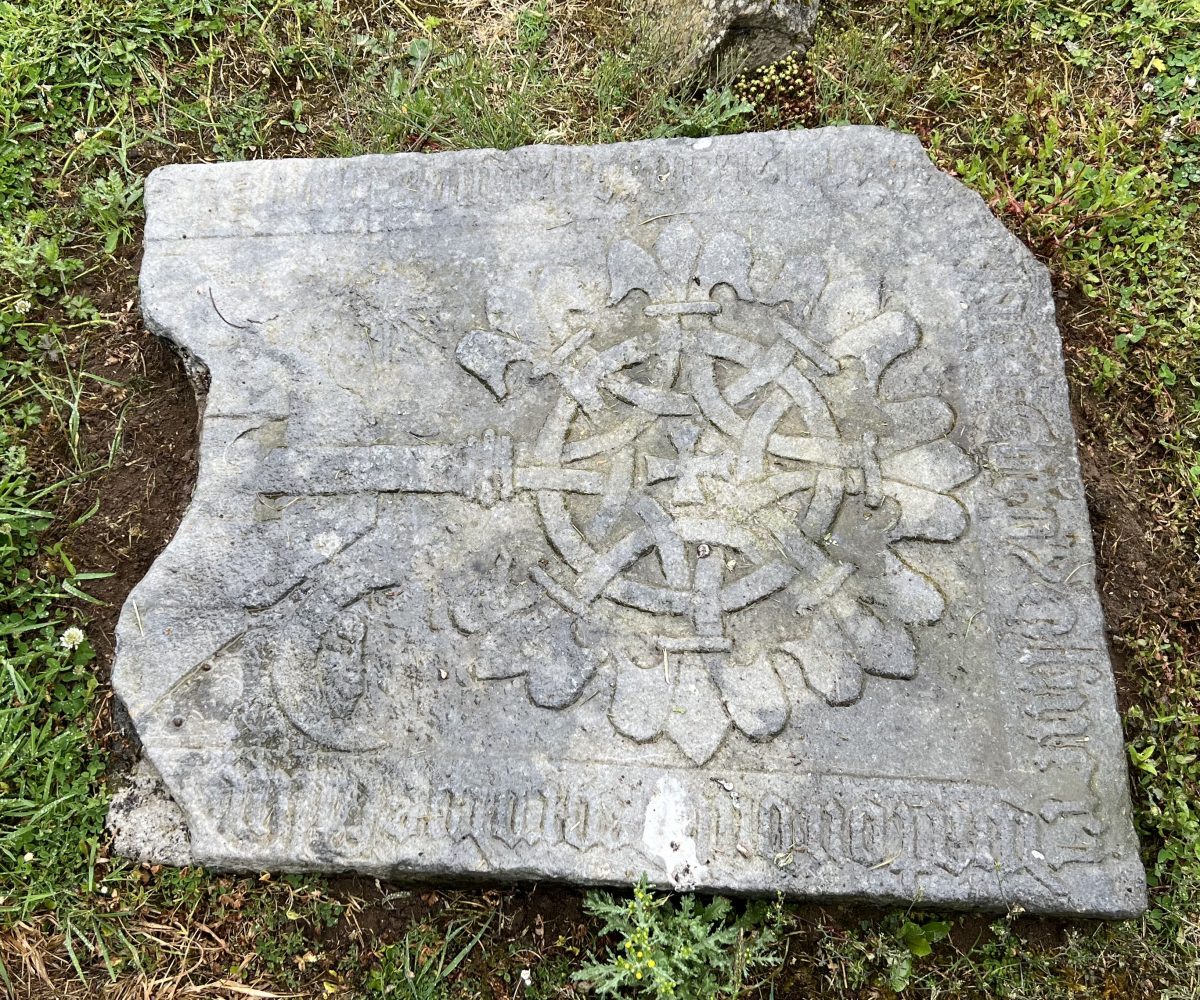
Then Joe casually brought us over to this grave and proudly announced that it was the grave of St. Nicholas (aka Santa Claus). Yes, Joe has Santa Claus buried in his back yard. Local legend has it that two Irish-Norman knights, fighting in the Crusades, brought his remains back from Italy. They returned home to Newton Jerpoint and he was buried near the church. The slab has the figure of St. Nicholas plus two heads – the crusaders who brought him back. Joe says there are pilgrimages to the site every December 6th – St. Nicholas’ Feast Day.
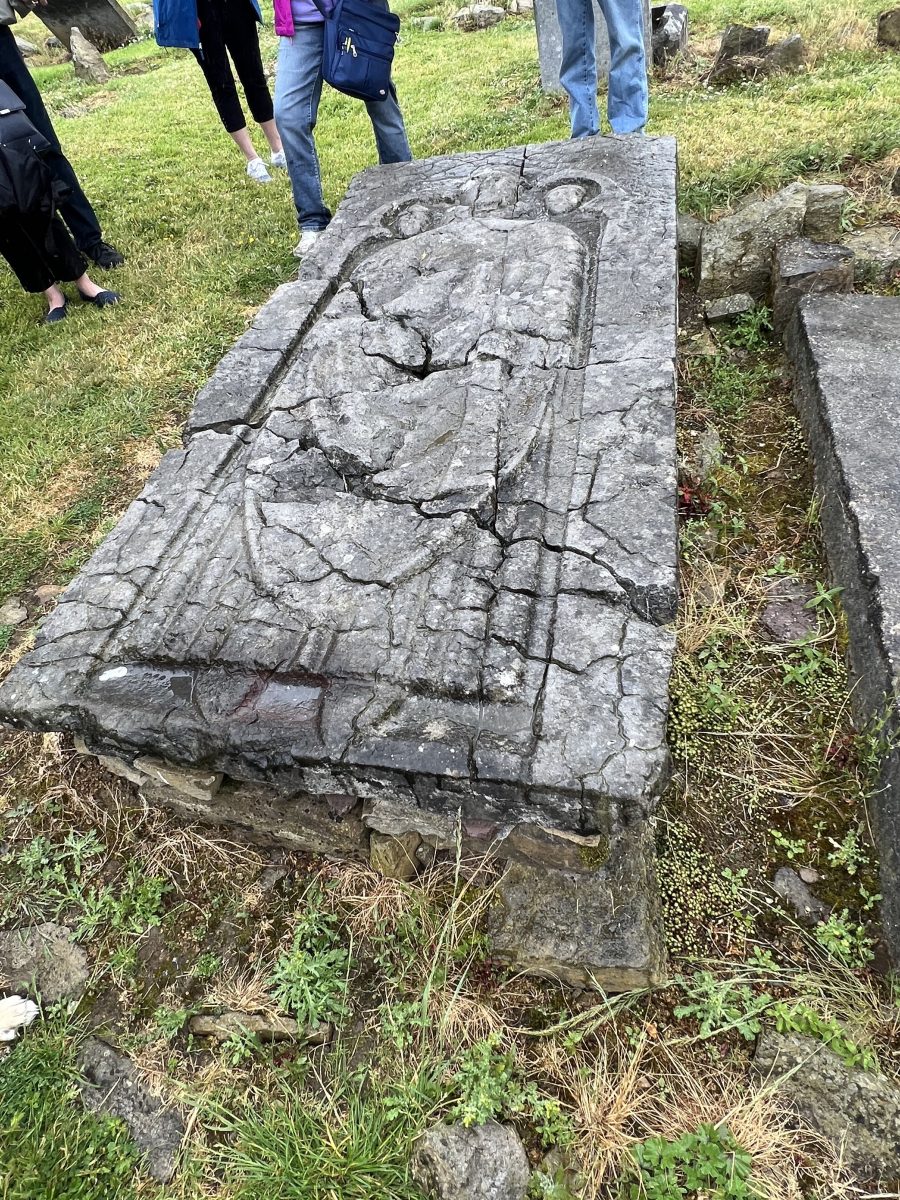
The rocks scattered about are unknown burial sites.
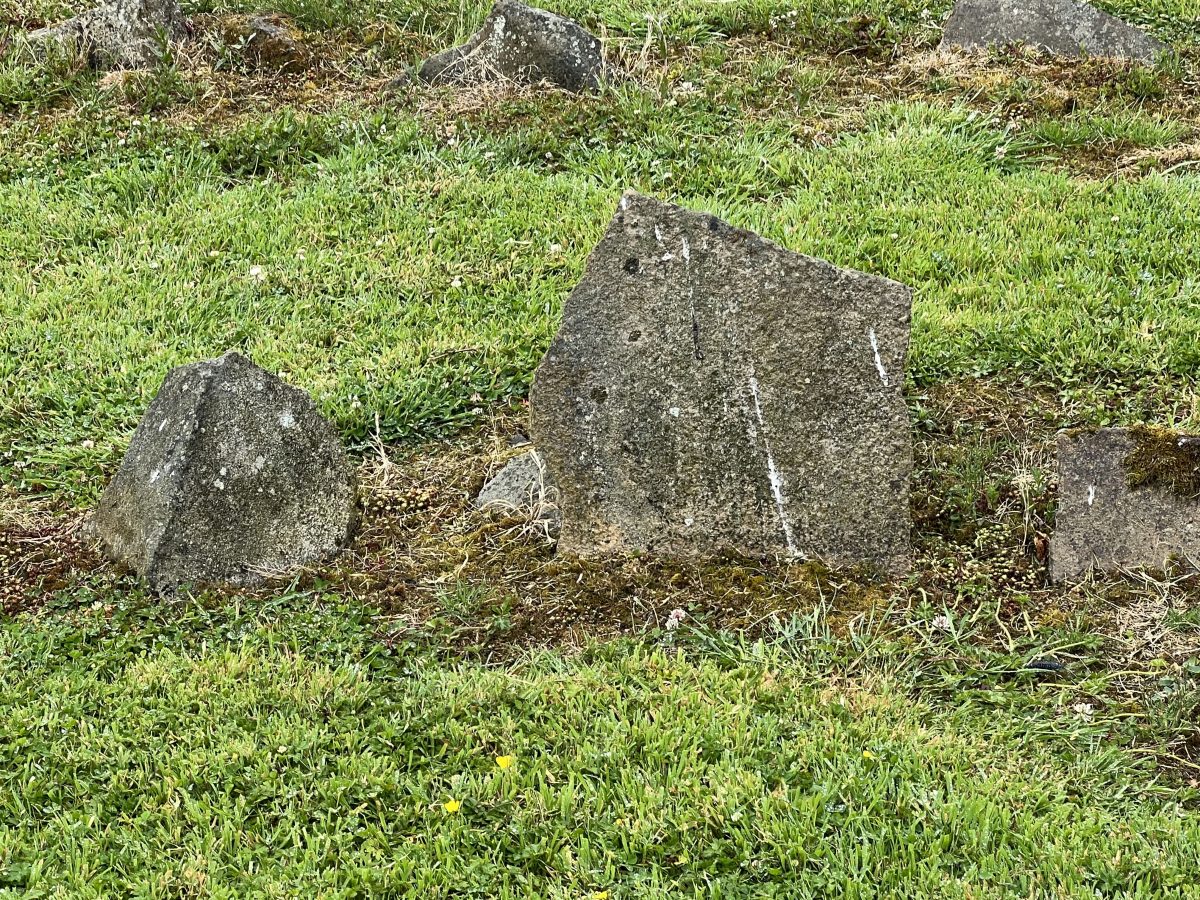
A Celtic cross with detail of the lilies
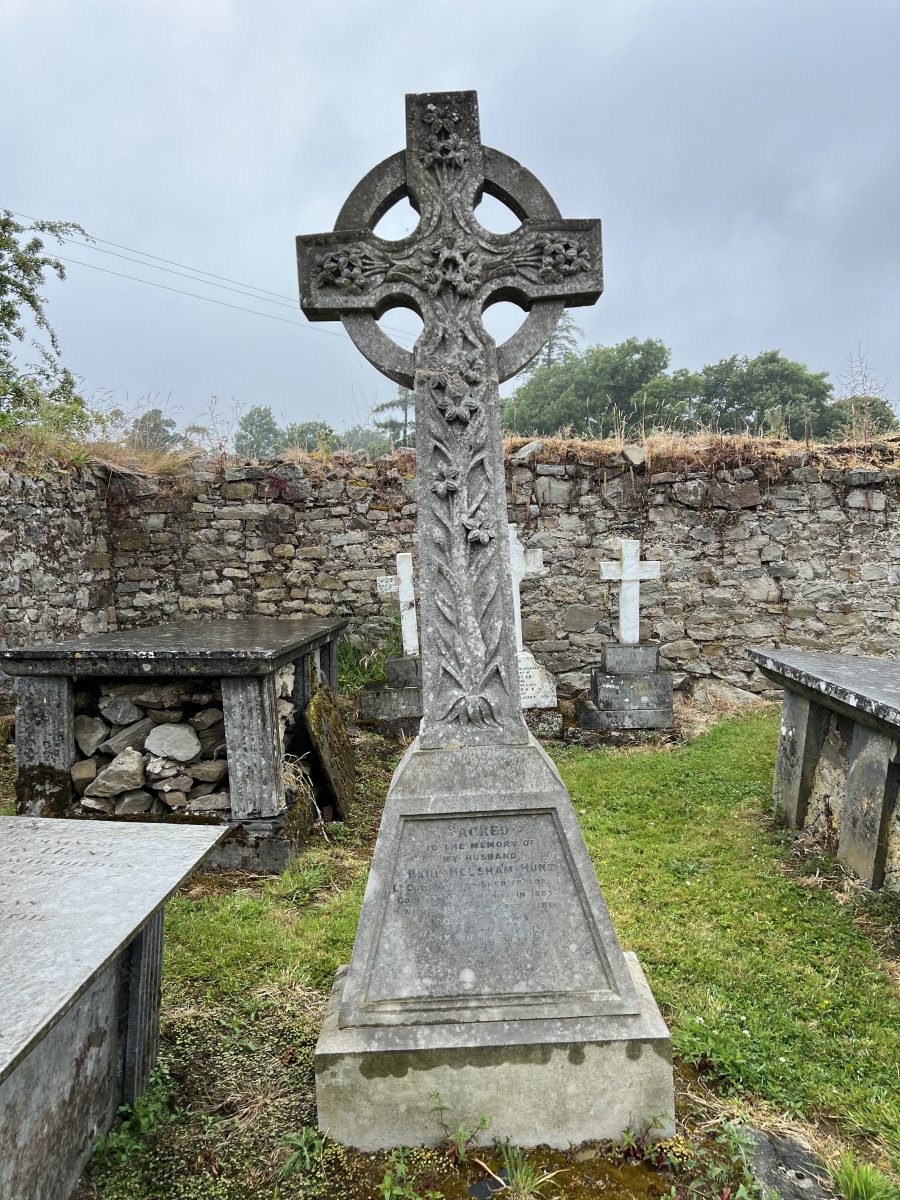
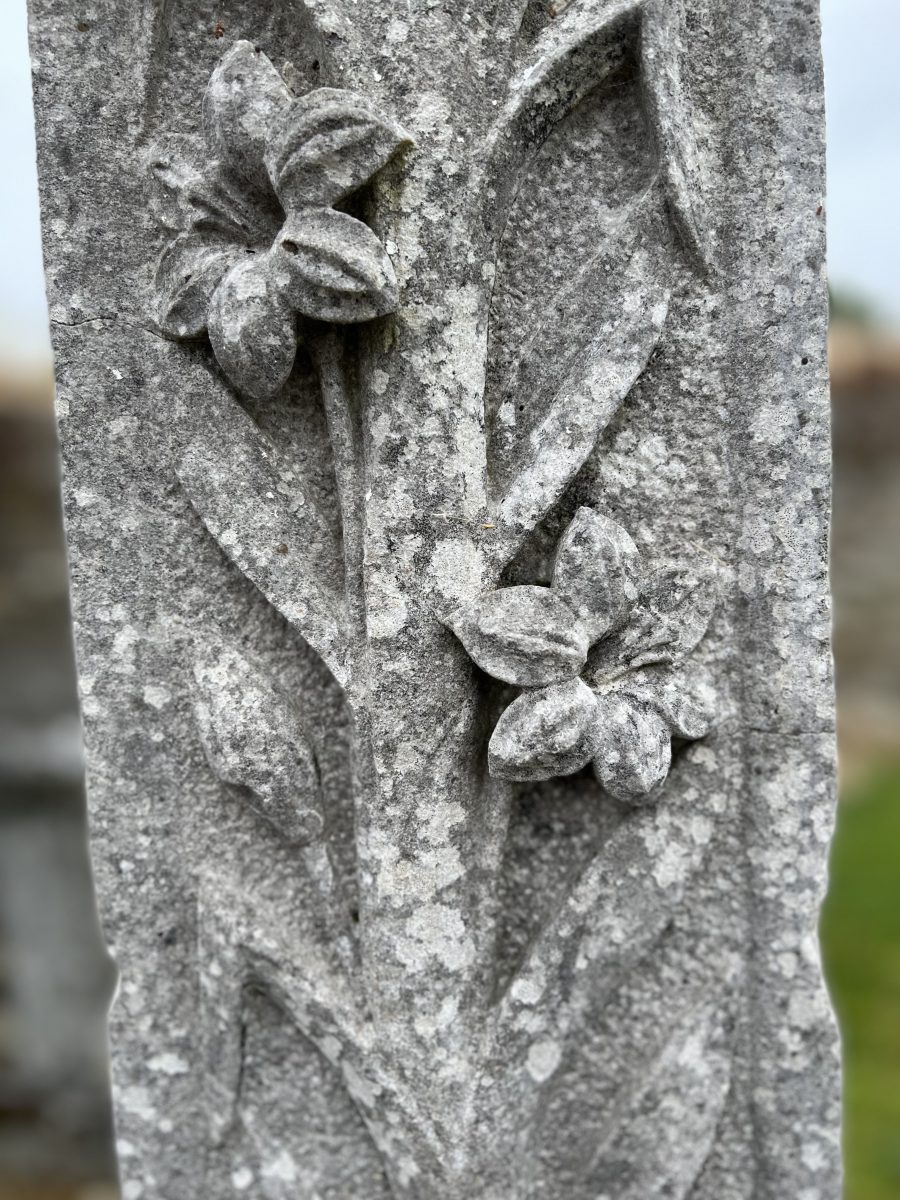
After the walkabout, we were invited back to the house for tea/coffee and homemade scones with cream and jam. (Maeve’s wonderful baking). We were served by Joe’s son and daughter. It made for a real sense of family.
We drove into Kilkenny where we had an afternoon of leisure time before heading to our hotel. I had booked a bicycle tour of Kilkenny. But the tour operator had called and told me it was cancelled because of the rain. He did offer to take me on a walking tour to make up for it. We agreed to meet after lunch.
I strolled along John Street and found Sullivan’s Taproom. Burger and beer for lunch. The service was great. She sped things along when I told her I had a tour booked at 2.
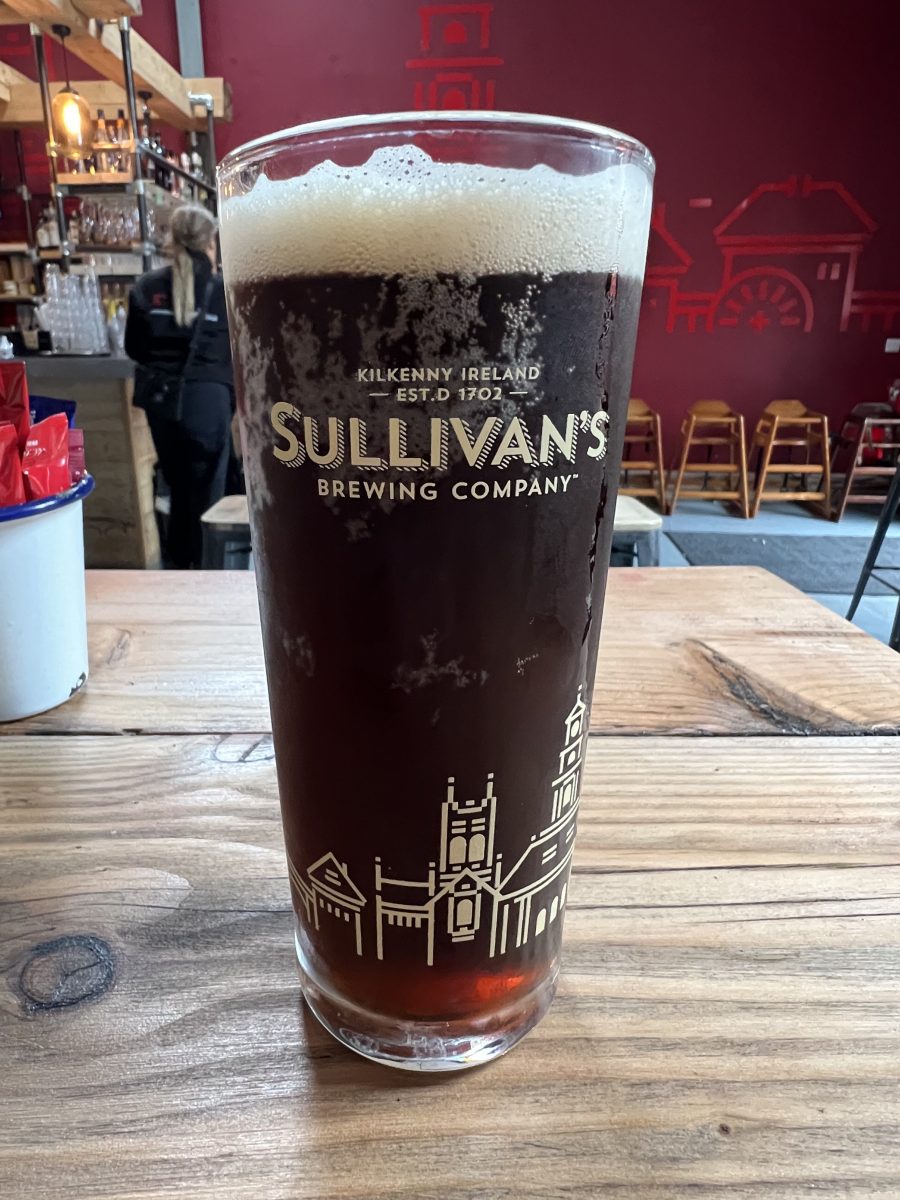
Met my guide by the River Nore’s bridge crossing. When asked what I was interested in I told him architecture and history. He takes me immediately to the Carnegie Library. Over 2500 libraries were built by Andrew Carnegie around the world. To require Carnegie Library funds, a town had to commit to providing the site, upkeep and maintenance. It was completed in 1910 and Kilkenny has maintained it.
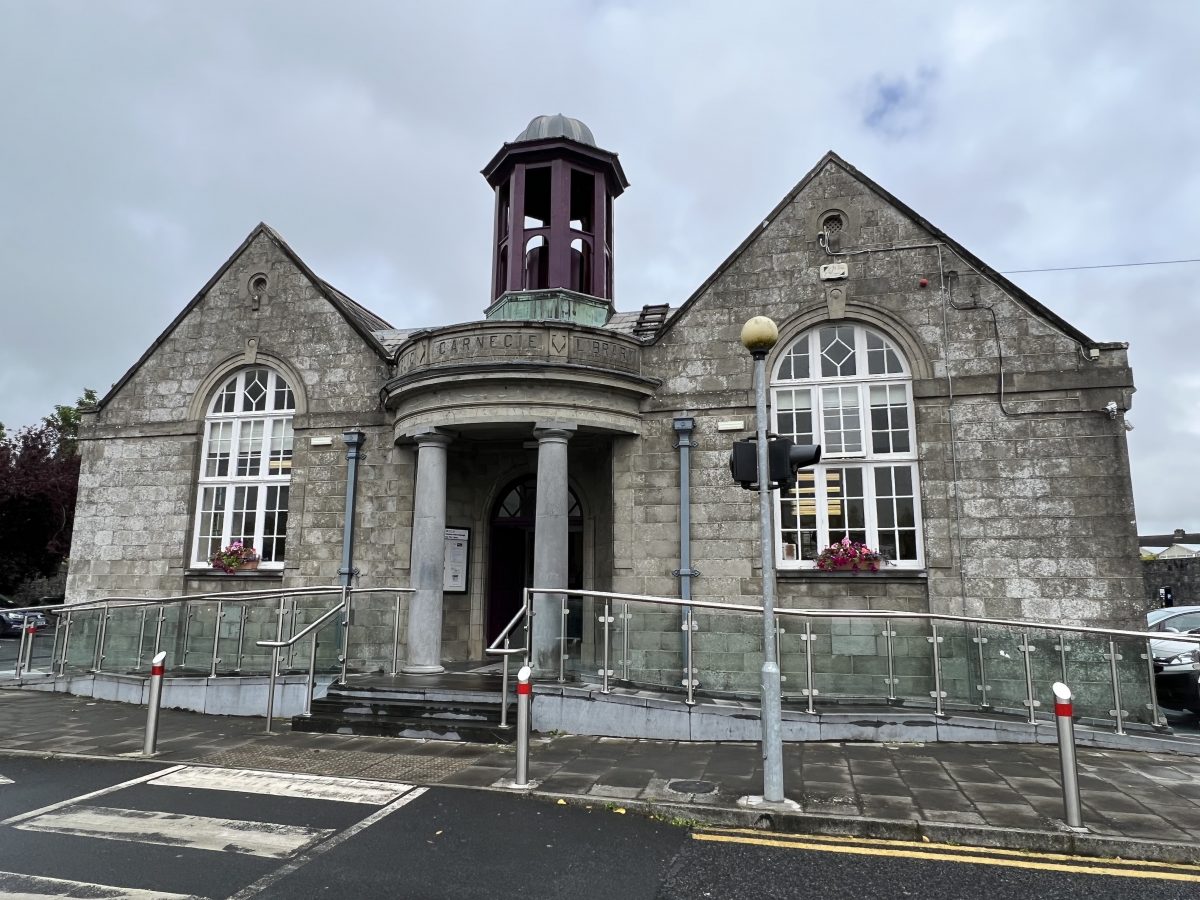
Bridgeview B&B that my guide highly recommended.

Kilkenny Castle – continuous occupation for 800 years. Tours are available and this was my other choice than the bicycle tour.
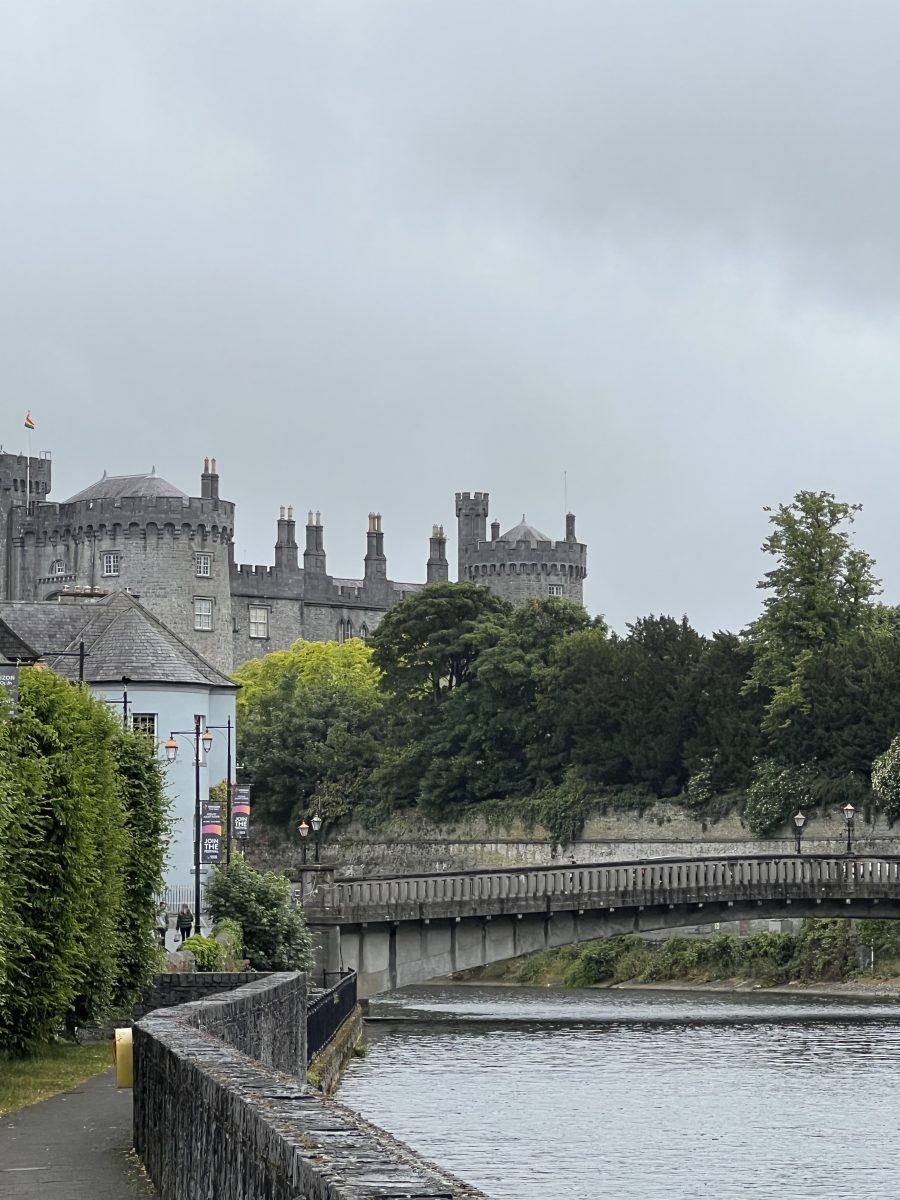
Kilkenny Courthouse – a blending of the new modern construction and the old court house.
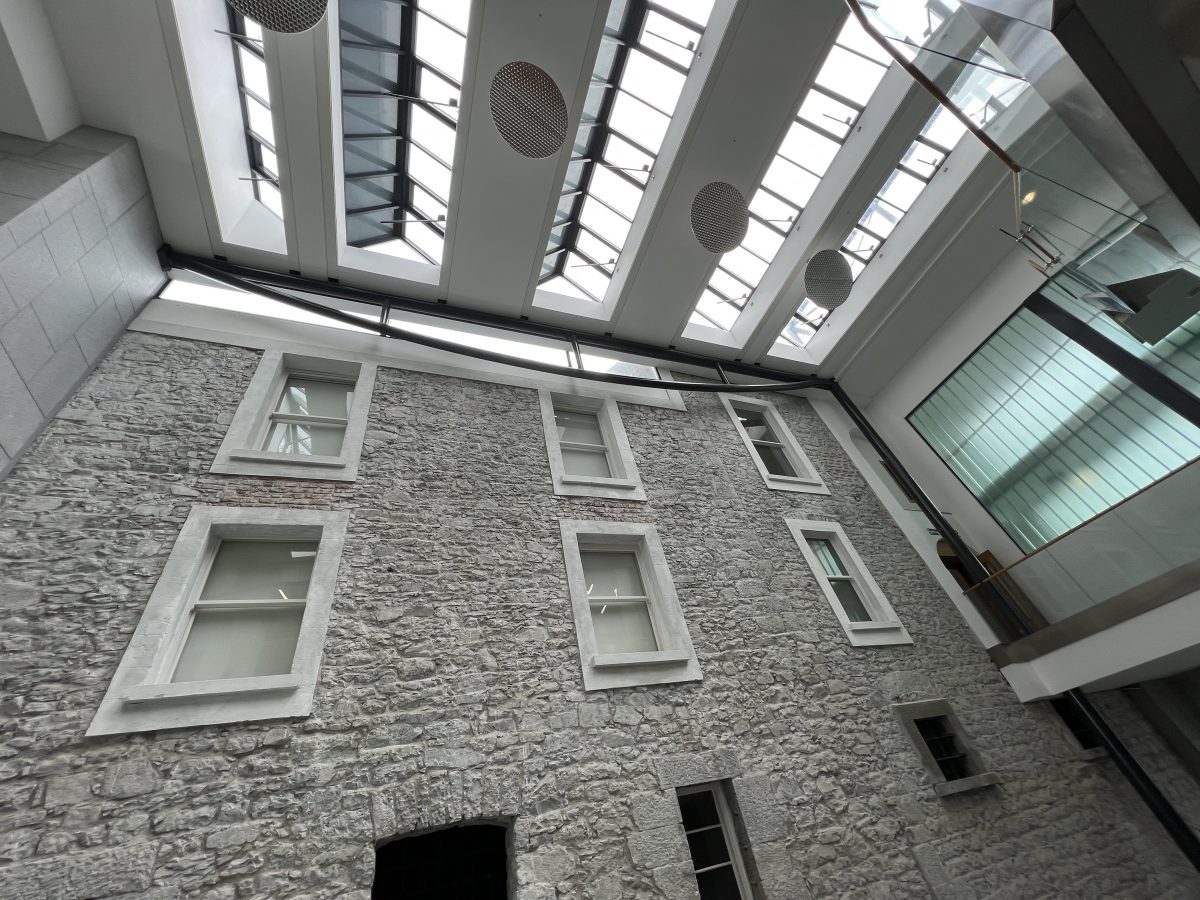
The court house with the Smithwick’s Brewery (another tour I wish I had time for).
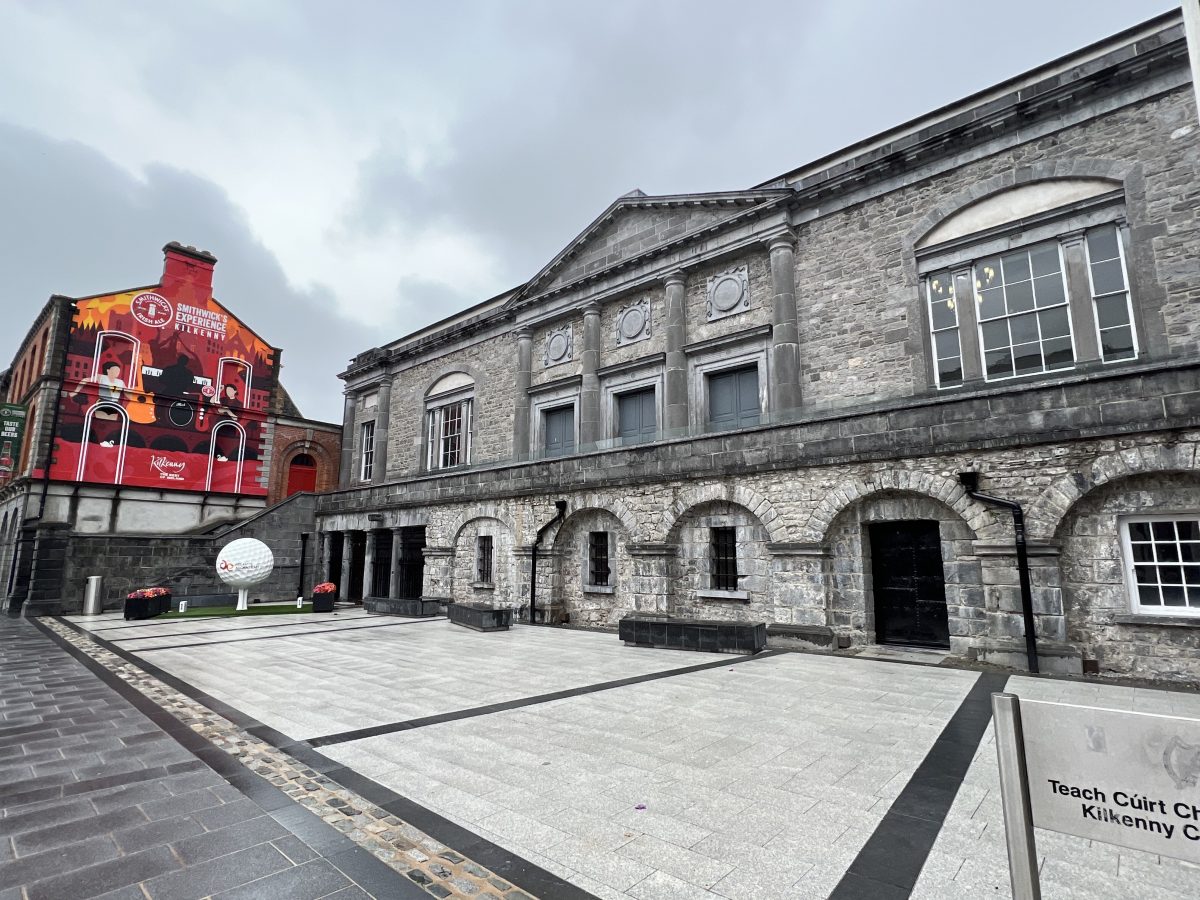
Rothe House & Gardens, was built in 1594. A second house was built behind it in 1604. Then a third house behind that in 1610. The gardens are located behind the third house. It is home to the Kilkenny Archeological Society for its collections. Another recommended visit if you have time in Kilkenny.
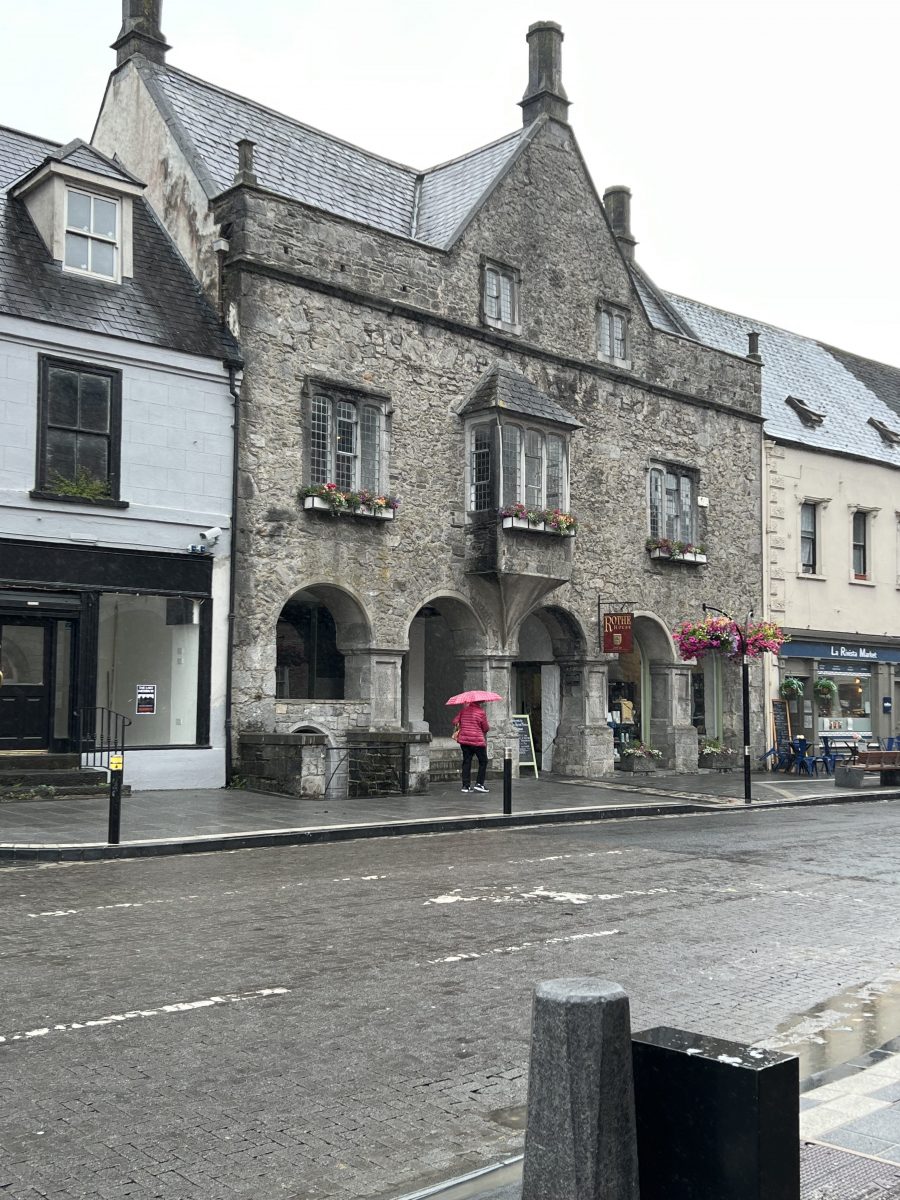
I had a set time to get back on the bus. My guide took me to one more special place – the Black Abbey. It was established in 1225 by the Dominican Order. The monks wore black robes over their white habits. The abbey had its own walls. This is known as the Black Freren Gate and is the only medieval gate to survive.
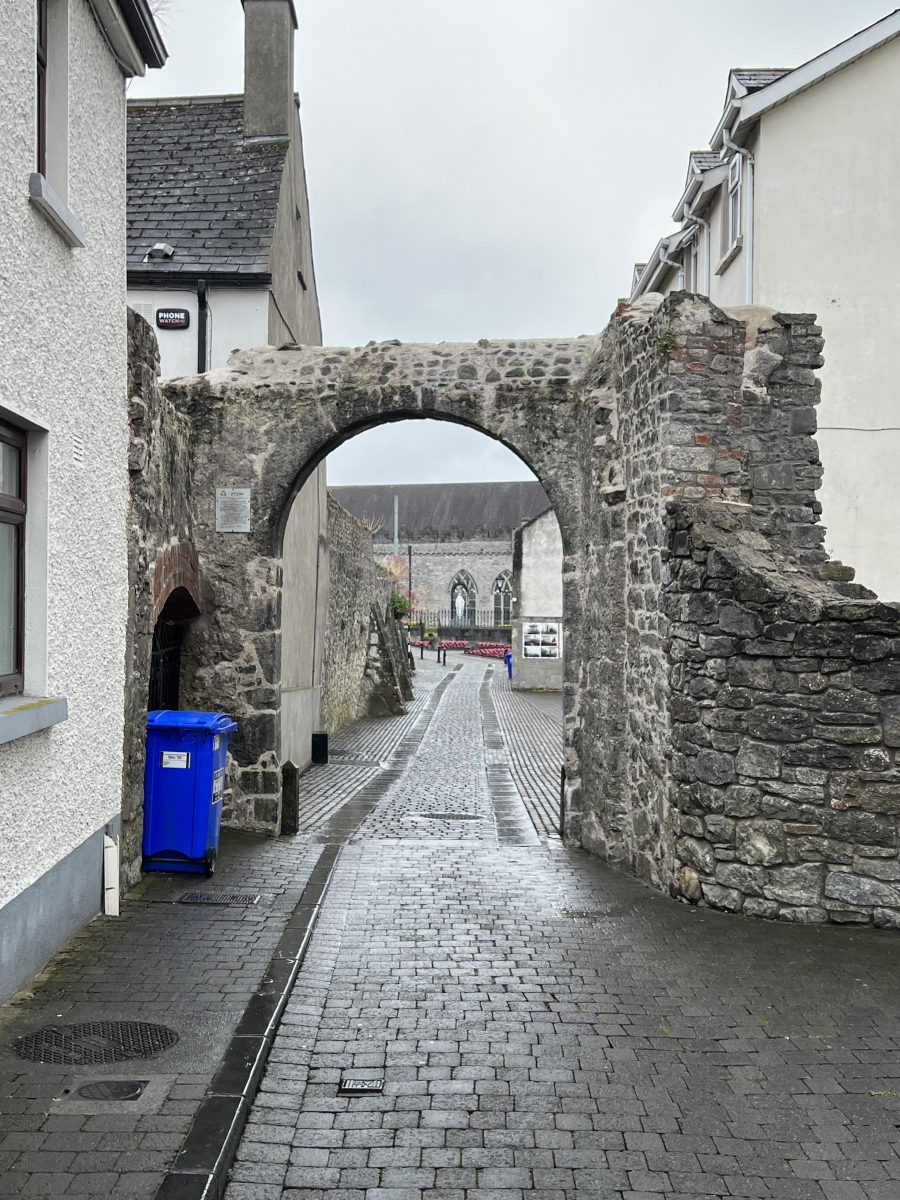
The site chose was outside the city walls to show independence. However, it was subject to flooding from the river.
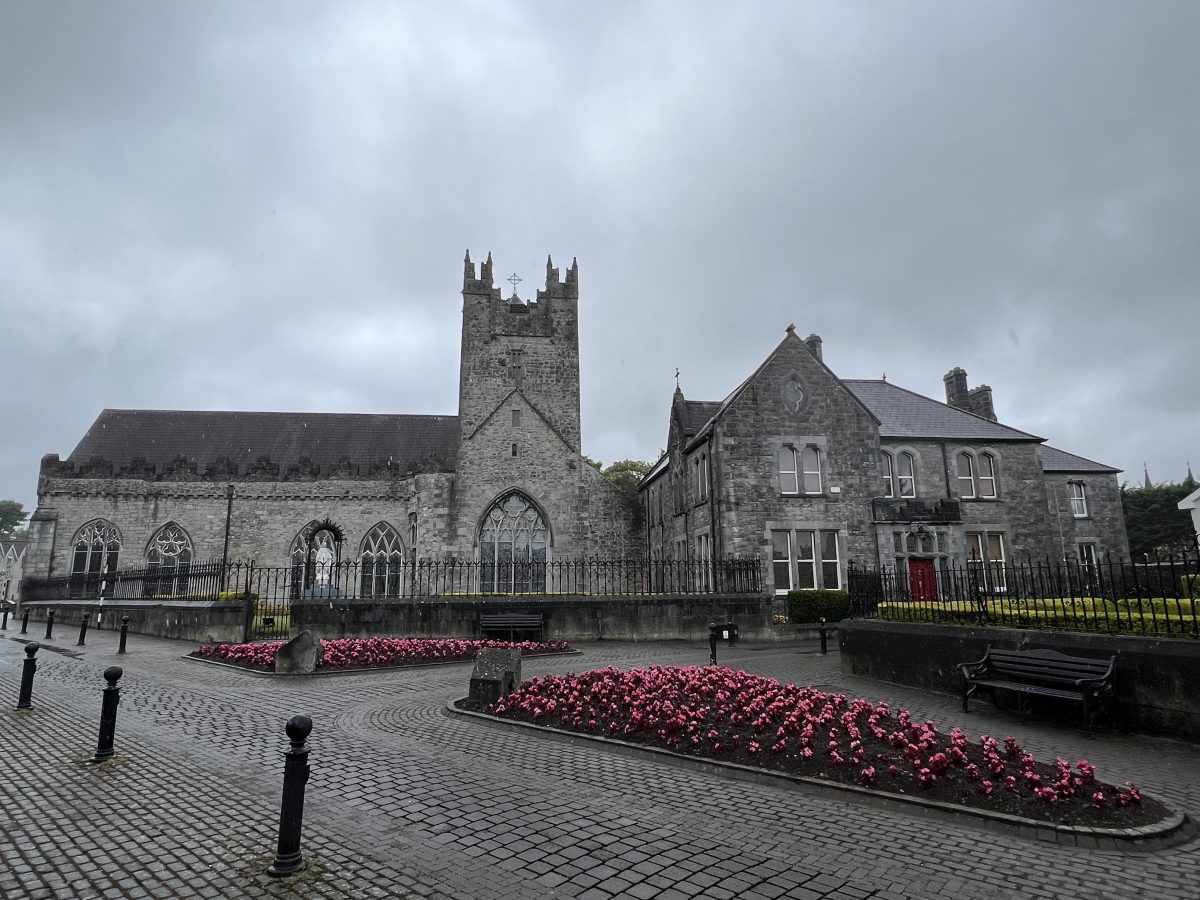
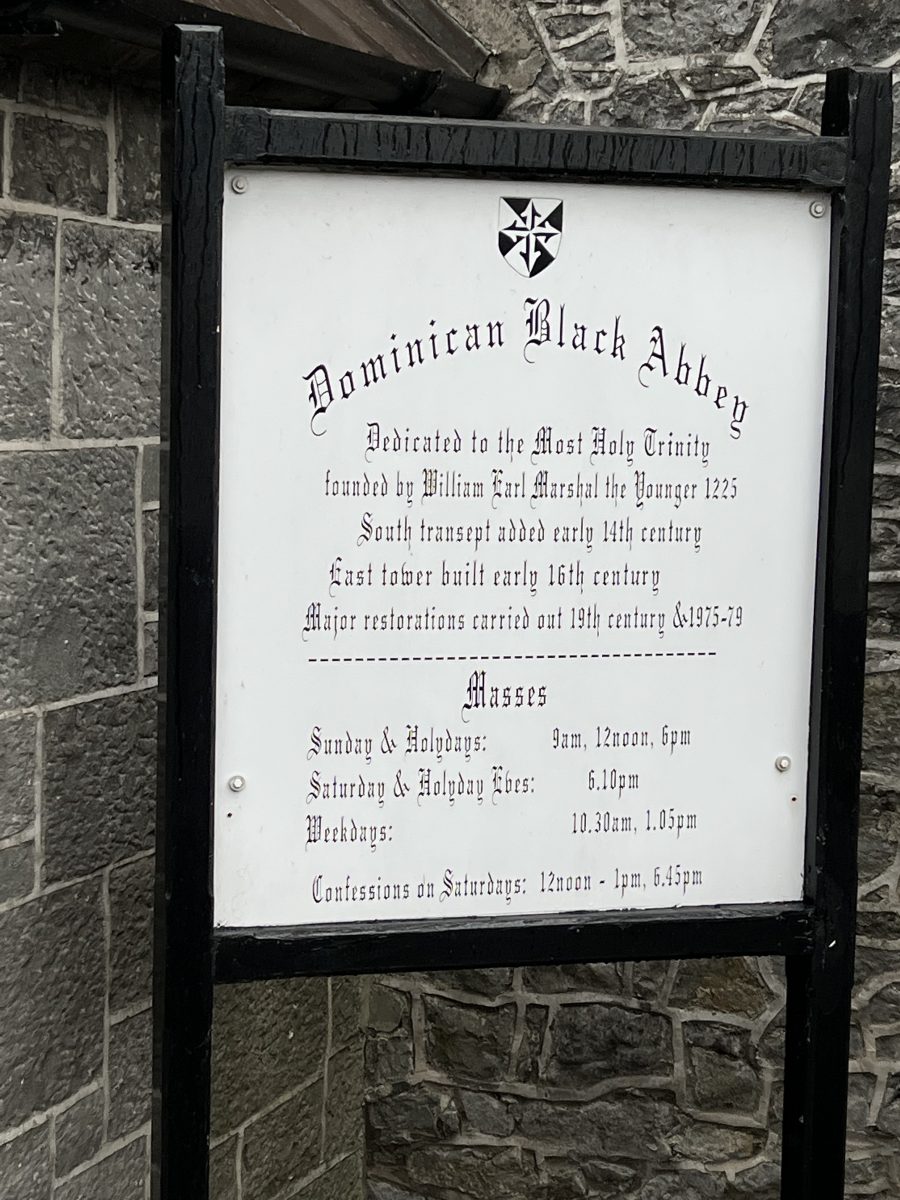
You walk into the darkened church. As your eyes adjust you turn a corner and behold this beautiful image. Behind the altar is the largest stained glass window in Ireland – the Rosary Window. The window was created in 1892. Under Elizabeth I and later Cromwell, the Protestants evicted the Dominicans. The photo does not do it justice. You have to see it in person.
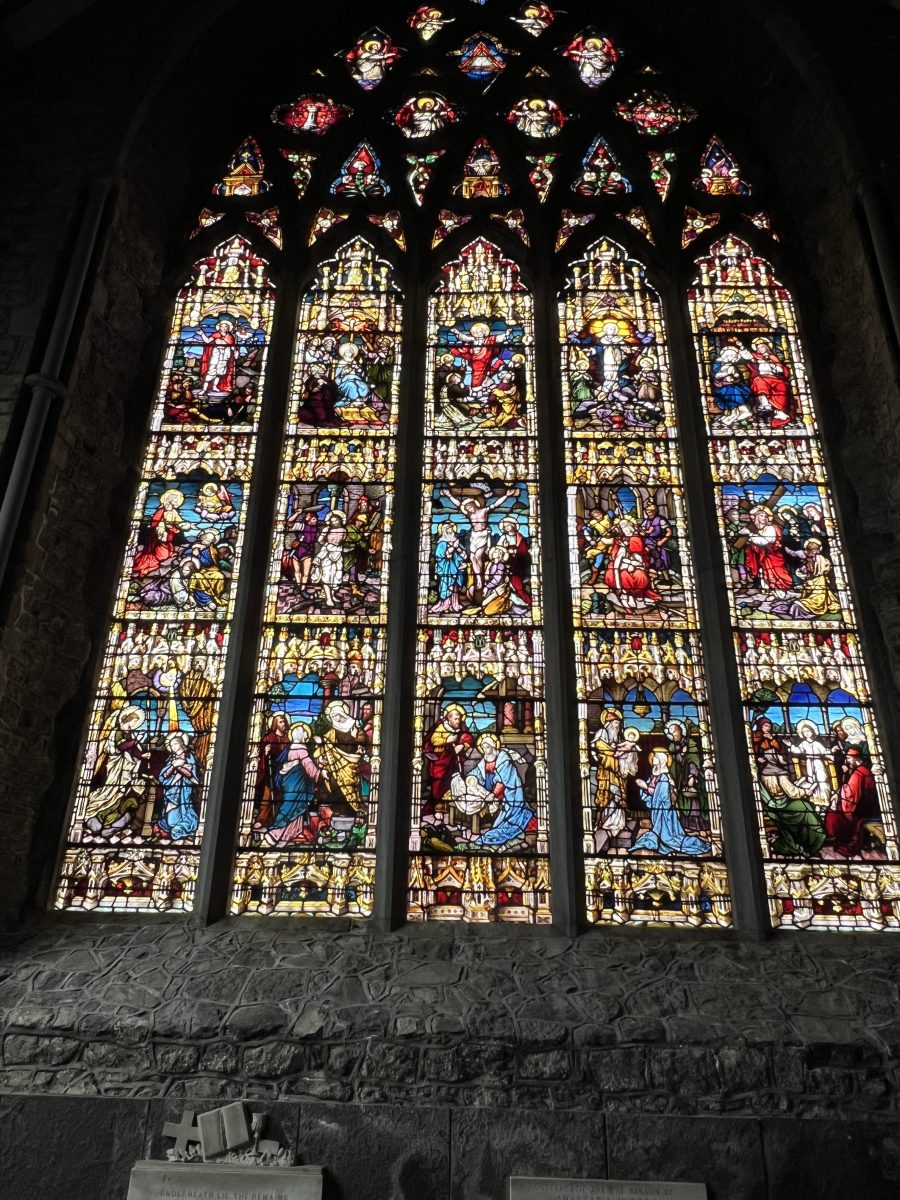
This statue depicts the Holy Trinity is from 1264, made from alabaster (although the date may have been carved later). It was hidden from invaders behind a “fake wall”. It was discovered during restoration in the 19th century. The Abbey had fallen into ruins but the Dominicans regained the Abbey in 1816 and started the restoration.
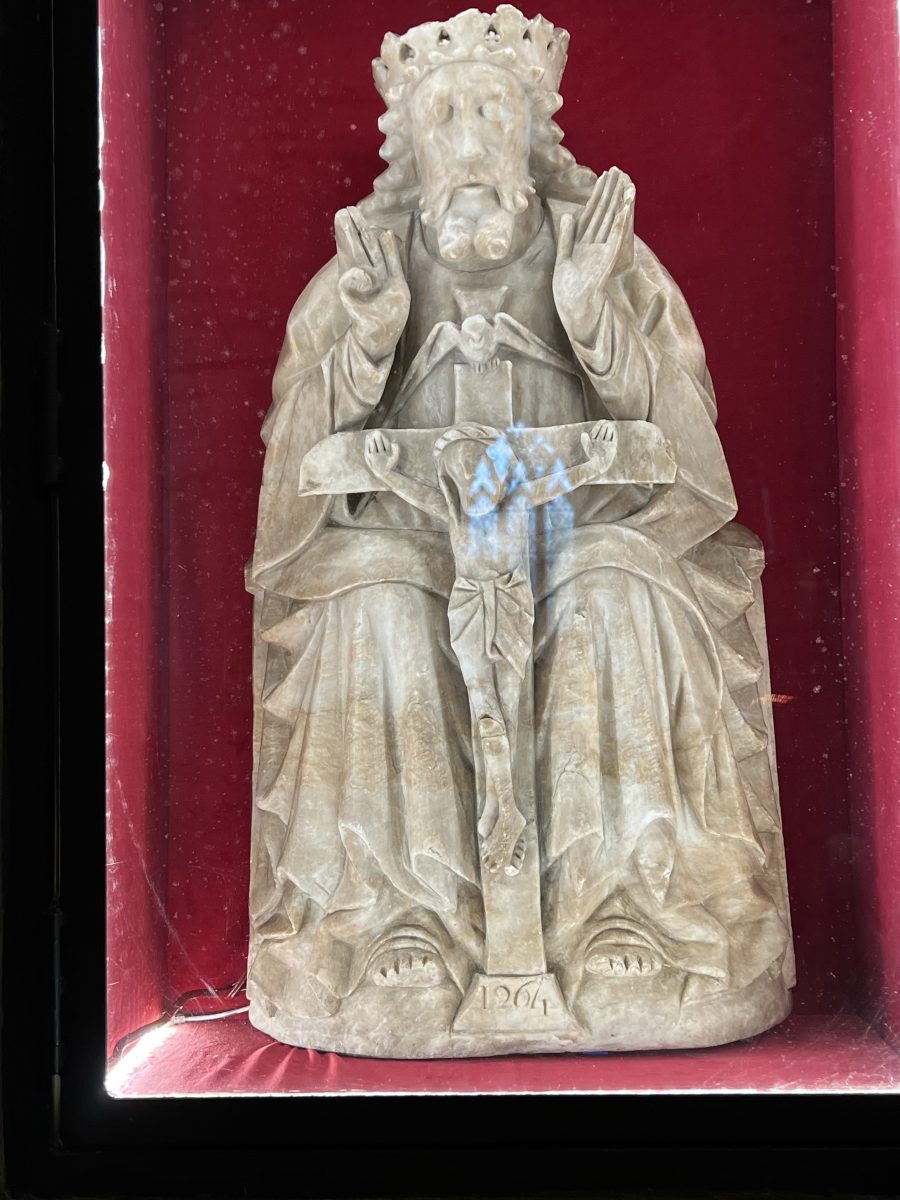
Part of the fake wall
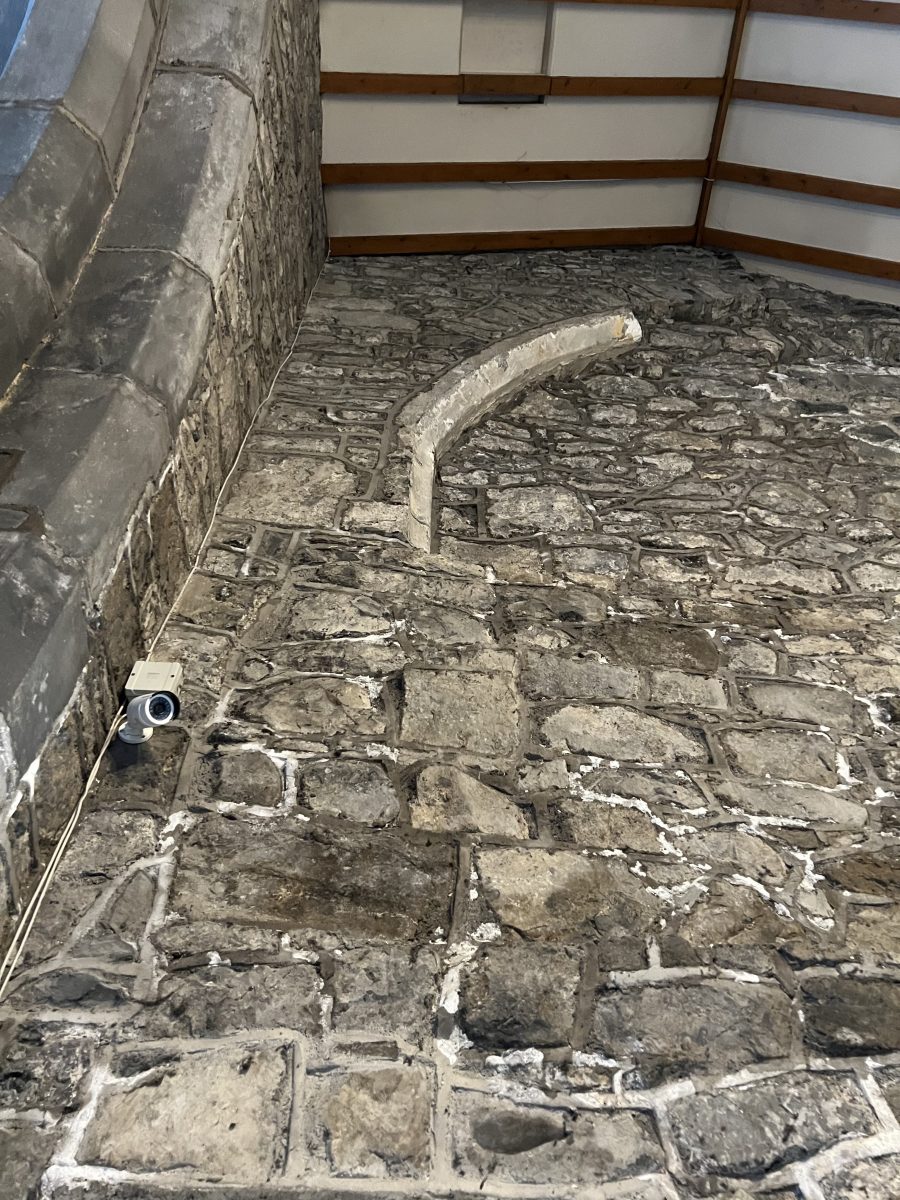
As we were walking back my guide explained how he was in the construction business that went bust during the 2008 recession. He was walking one day and saw a tour operator speaking to a group. His buddy said “you could do that”. He started the bicycle tours because he was an avid cyclist and no one else was doing it. The night before he had taken a group of 30 cyclist out for the tour.
He showed me one last thing that I would have missed. He pointed to the sidewalk and asked what do you see? I said “paint drippings?”. No, they are ancient fossils. The cobble streets are embedded with Kilkenny black marble. Originally mined in the Black Quarry in the 17th and 18th century. The white circle is a mollusk.
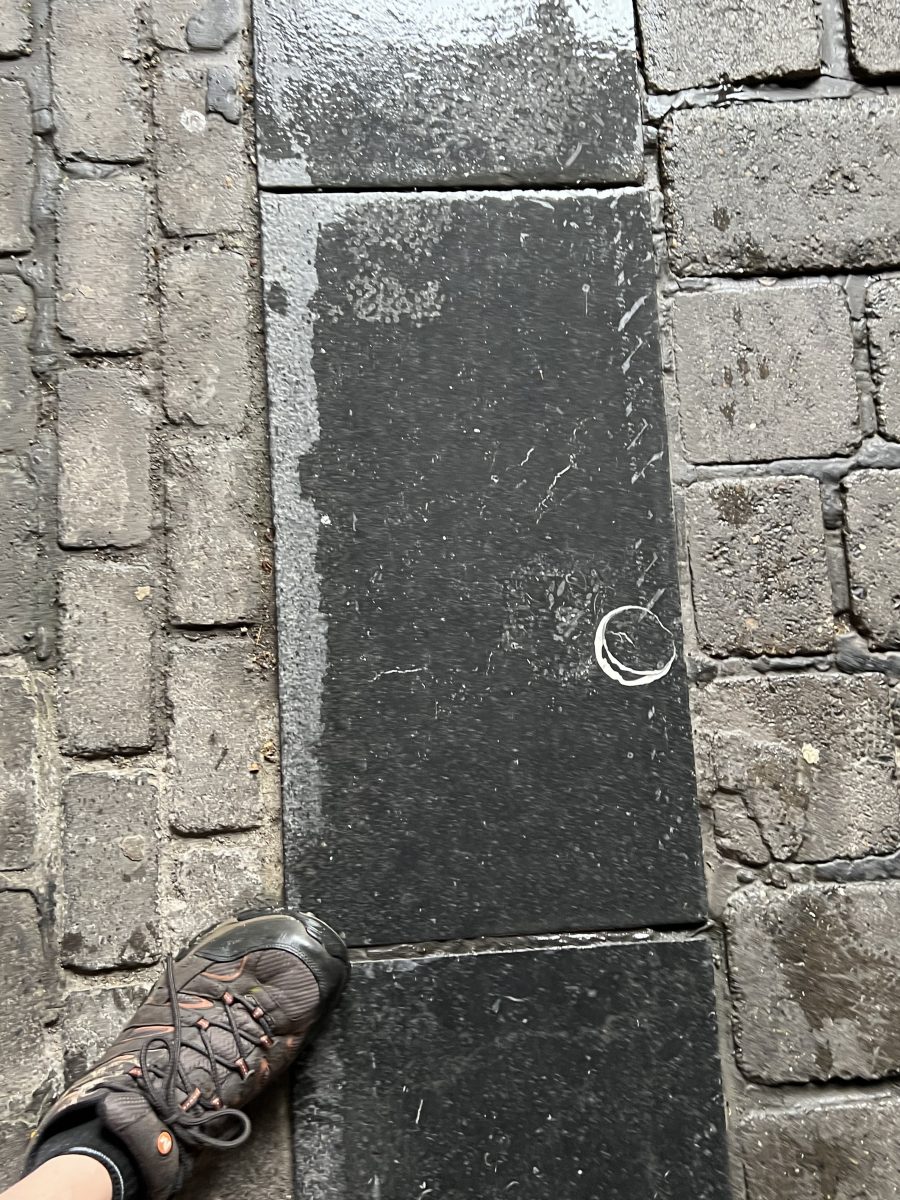
The marble contains the fossils of brachipods, mussels, coral and others that are millions of years old.
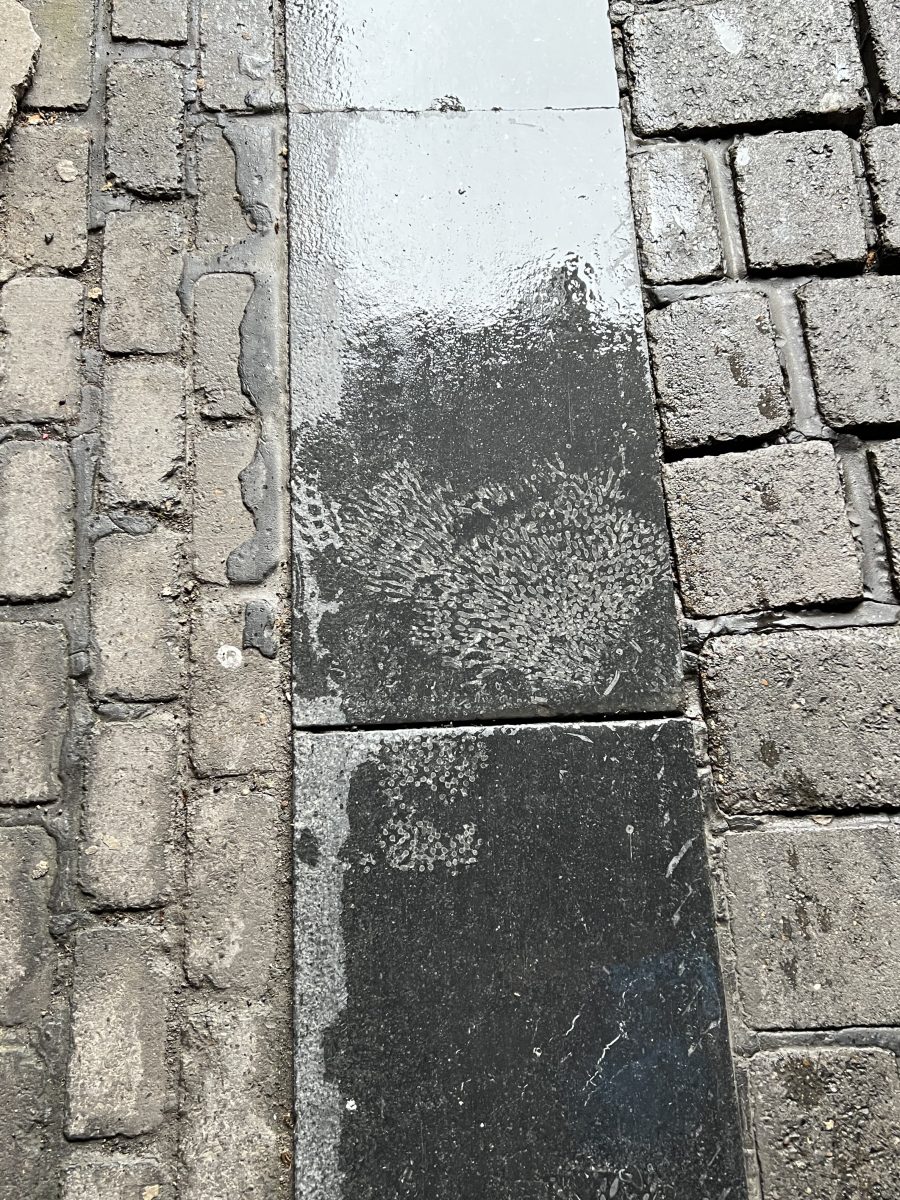
Just before the bus I spotted a plaque down a stone walkway, Butterslip Lane, so went to investigate. It was to honour Petronella de Meath – the first woman in Ireland and Great Britain to be burned at the stake for heresy in 1324. It happened just around the corner from the plaque. She was handmaid to Dame Alice Kyteler. Following the mysterious death of Alice’s four husbands, she was accused of practicing witchcraft and sentenced to be burned to death. Petronella was accused at the same time of being an accomplice. Alice escaped so Petronella was made to take the place of her mistress, flogged and burned alive.
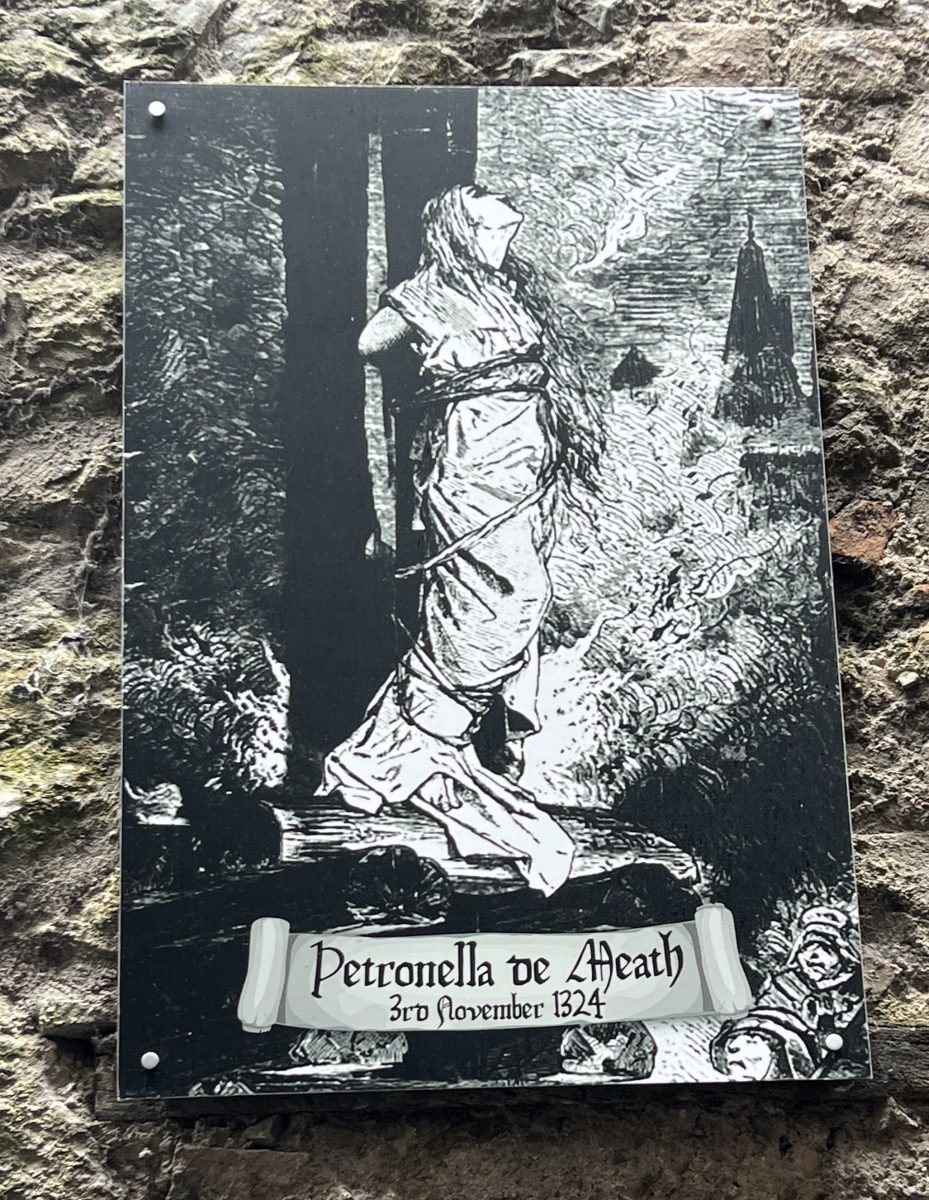
There is a restaurant next to the plaque called Petronella that also honours the falsely accused woman.

I made it back to the bus just in time. It was another packed day of fun and interests. We headed to our 5 star hotel that I will tell you all about in the next post.
